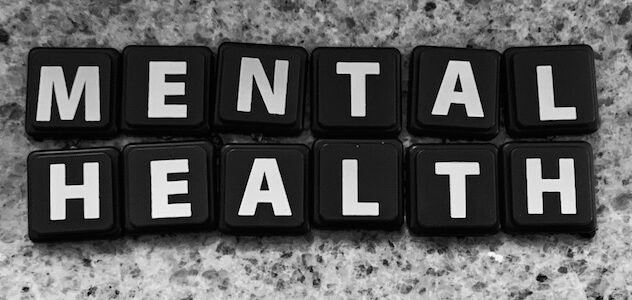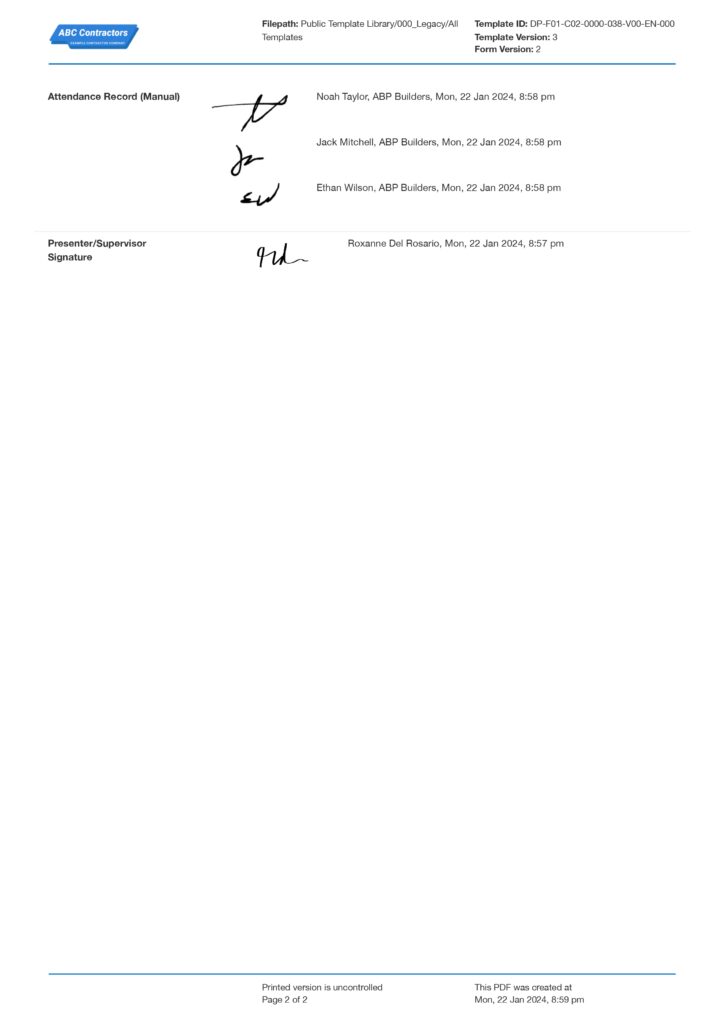Dashpivot Article – Mental Health Safety Moments
Mental Health Safety Moments
In this article, we will be tackling topics on mental health for your safety moments to help spread awareness, and to have workers check themselves if they are both physically and mentally healthy.

What is Mental Health in the Workplace?
Mental health in the workplace refers to employees’ psychological, emotional, and social well-being within a shared work environment. Employees who have good and healthy mental health are able to respect themselves and others, cultivate strong connections with their colleagues, and successfully manage the day-to-day problems and duties that are associated with their place of employment.
For example, in construction, physical demands and hazards can cause extreme stress and anxiety among workers, while similarly, mental health challenges affect workers' ability to perform tasks safely. Incorporating mental health awareness in construction ensures that employees are prepared for the physical demands and mental stress of their jobs in the dynamic industry.
Why is Mental Health Important?
According to the World Health Organisation (WHO), one's mental health may be defined as a condition of mental well-being that explains how an individual deals with the pressures of everyday life, achieves their potential, studies and works effectively, and makes a positive contribution to their society. In addition to being an essential component of health and well-being, it is the foundation upon which our individual and communal capacities to make choices, cultivate relationships, and mould the environment in which we live are built. There is a fundamental human right to mental health. And it is essential to the growth of the individual, the community, and the socioeconomic system.
Topics for Mental Health Safety Moments
Many safety moments tend to focus on physical hazards. However, we have established that checking our mental health is as equally important as checking our physical bodies. For mental health safety moment topics, we will focus on subjects that will involve invoking workers to check their mental state. Workers recognising their mental distress, if any, begins with their awareness of their mental health. Here are the following subjects that you can use to educate your personnel about their mental health:
Emotional Intelligence Quotient
The capacity to control your own emotions as well as comprehend those of others around you is known as emotional intelligence. Self-awareness, self-regulation, motivation, empathy, and social skills are the five main components of emotional intelligence. Individuals with good emotional intelligence are able to recognise their own emotions, their meanings, and the ways in which those emotions influence their behaviour and, therefore, that of others. Though having high emotional intelligence does not imply that you can manipulate other people's emotions. However, you'll have a better grasp of their motivations and how to engage with them if you can pinpoint the feelings that underlie their actions. Bringing this topic to your safety moments, allows workers to understand their emotions and better regulate them. This can help prevent conflicts from arising and promote better teamwork in the workplace.
Workplace Stress
The harmful physical and emotional effects that may occur in the workplace are referred to as workplace stress. These responses can occur when there is a contradiction between the expectations of the job imposed on the person and the amount of control the individual has over finishing these loads given to him or her. Workplace stress is easily overlooked due to the fact that workers are not properly recognising that they are stressed. Awareness of workplace stress is a vital discussion point in your safety moments to educate workers about it and how they can manage it better. Furthermore, in your safety moments meeting, you can also discuss the effects of mismanaged workplace stress. One example of this is burnout, which is a condition of mental, bodily, and emotional weariness that is brought on by extended and increased levels of stress.
Sexual Harassment in the Workplace
The term "sexual harassment" refers to unwelcome sexual approaches, demands for sexual favours, and other forms of verbal or physical harassment that are directly or indirectly related to sexuality. Sexual harassment may have substantial psychological repercussions on its victims, including anxiety, sadness, headaches, sleep difficulties, weight loss or gain, nausea, decreased self-esteem, and sexual dysfunction. These symptoms might be experienced by harassment victims. When harassment is so pervasive or severe that it results in an atmosphere at work that is hostile or offensive, or when it leads to a decision that is negatively affecting employment, it is considered to be unlawful.
It is a company’s obligation to maintain a healthy and safe workplace. Behaviours like these are not to be tolerated. To provide an atmosphere where people can easily report these kinds of activities and not hide in their shame for being sexually harassed, talking about it in formal settings can be helpful. It is essential to discuss what matters are considered sexual harassment and what to do when personnel is sexually harassed. It is equally important to highlight that sexual harassment of others is illegal. This will implement a rule about staying professional at work and make workers more aware of their boundaries.
Anxiety
Anxiety is a normal response to stress. Fear, dread, and unease are all signs of anxiety. But having worry all the time is not normal. This could be a mental illness that makes it hard to live and work. Generalised anxiety disorder (GAD) makes people afraid, worried, and stressed all the time. It's when you worry too much, too often, and about things that aren't important, like your health, your job, or your chores. Talking about anxiety in your safety moments meeting can reduce the stigma around mental health disorders. It also promotes creating a safe space for individuals who are suffering such disorders.
Depression
According to the World Health Organisation (WHO), depressive disorder (also known as depression) is a common mental disorder. It involves a depressed mood or loss of pleasure or interest in activities for long periods of time. In addition to having an impact on how you think, feel, and act, it may also result in a wide range of emotional and physical manifestations. Depression is a silent killer. We can never know who is suffering from such disorders. The best way to fight depression is to spread awareness and educate. Just like talking about anxiety, discussing depression, its symptoms, and its effects can help break the stigma around it. It helps people who are suffering from this disorder be in an area where they are understood and safe.
The Importance of Sleep in Mental Health
Your body and mind are able to regenerate themselves during the time that you are sleeping, which helps you to wake up feeling refreshed and more alert, provided that you have rested enough. Sleep is a vital activity to help the body maintain its health and protect itself from diseases. If you do not get enough sleep, your brain will not be able to operate effectively, which will blur your ability to focus, think clearly, and process. There are times in the workplace where people compromise their time for sleeping just to attain deadlines and finish projects, which sometimes has become a culture in some, if not most, establishments. Talking about the benefits and importance of sleep allows workers to absorb why it is important to allow your body to rest and regenerate.
The Benefits of Work-Life Balance
Work-life balance is usually thought of as the mix between how much time you spend on your job and how much time you spend doing what's important to you outside of work, like spending time with family or friends or doing hobbies and interests. This is important to discuss in the workplace to maintain a healthy and productive workforce. Studies show that personnel who only dedicate themselves to working are more prone to mental and physical health conditions. As human beings, rest is essential. This will allow the bodies to gather and replenish energy, which can help with concentration and efficiency when coming back to work. Integrating this topic into your safety moments can make employees aware of the repercussions when they do not rest and take time to enjoy themselves.
Supporting Colleagues in Crisis
It might seem scary to talk about mental health, but we've all talked to people about death in the family, breakups, and other life events. They aren't always easy, but they can mean a lot to someone who is having a hard time. It's important for every friendship to listen. Active listening is a group of skills that help us stay in the present moment and follow along with a talk. If the right people in a person's life help them, most people who have mental health issues get better. Taking the initiative to talk about this in an official setting makes you feel safe enough to talk about your problems. A setting that makes you feel safe at work can help you get along better with your coworkers, which can lead to a good place to work where everyone knows and cares about each other.

Use this free doc for your own mental health safety moments
A Digital Approach to Safety Moment Talks and Ideas
A safety moment is a great platform to talk about safety and health in the workplace. Making a safety moment by hand, however, might be a bit time-consuming. The constant printing and reformatting can be a little frustrating if it is done more often. Additionally, making these forms by the pen-and-paper method requires you to open a lot of computer applications to make a form and record the contents of the form. This consumes a lot of time and is highly prone to human error.
With the Dashpivot Safety Moment App, you can use a digital form, which you can create using a sophisticated form builder, or simply choose a pre-made form from one of the app template library's free safety moment idea templates. You may also use the digital file without worrying about the internet. While on the field, you can use the Safety Moment Talk app while offline. Once you have supplied the necessary data from your meetings, you can just save the file and upload it later when the internet is available.
Any completed or pre-made safety moment meetings may also be easily located, updated, or converted into a professionally created PDF document online, where they are automatically structured and kept.
To do all of these and more, use the Dashpivot safety moment app. For further information, click this link: The Dashpivot app for Safety Moment.

Weekly safety inspection checklist template
Get your weekly safety inspections done easier and faster, and then keep them all organised and easily searchable.

Safety Meeting template
Conduct better safety meetings on the fly and keep all of your meeting records secure and searchable using this template.

Safety Meeting Minutes template
Look more professional during meetings and keep your meeting minutes more organised using this safety meeting minutes template.

